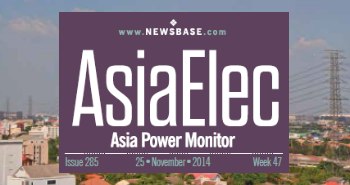AsiaElec: 900-MW Norwegian solar project in India postponed

Citing a “40% import duty” in addition to a shortage of locally produced solar panels to initiate the project, a $400mn solar development project taken on by Norwegian renewable power producer Scatec in the Indian state of Rajasthan has temporarily, at least, been suspended.
The decision to shelve the project was made prior to ground having actually been broken at the site, even though the finished plant had been scheduled to come online some time later this year.
A Scatec earnings report published last week had said “Scatec and ACME have decided to put the 900-MW project in India on hold due to lack of supply of domestic solar panels and a 40% import duty on solar panels to be imposed from April 1 (2022).”
Oslo-based Scatec first showed interest in Indian solar projects last year when it partnered with local firm ACME Solar to meet a 25-year power purchase agreement (PPA) with Solar Energy Corporation of India (SECI).
The reference to a “lack of supply of domestic solar panels” and import duty, however, is being seen by some in India as indicative of the true state of play of New Delhi’s wider solar ambitions.
80% of all solar materials used across India are currently imported from neighbouring China.
Publicly at least, India is aiming for 280 GW of grid-linked solar capacity by the end of the decade, in the process making up the majority of the national target of 450 GW of power obtained from renewable energy sources.
As a result, in its bid to limit the current dependence on Chinese produced solar imports at a time the two nations are facing off over territorial issues in the Himalayan border region, the government of Prime Minister Narendra Modi last week announced a INR195bn ($2.62bn) investment programme aimed at expanding domestic production of solar panels and associated materials.
India remains the world’s third ranked greenhouse gas (GHG) producer but is seeking to reduce emissions to zero by 2070.
Solar power capacity has increased 11-fold in India over the past five years, according to Neelima Jain, the current deputy director and senior fellow, Whadhwani Chair in US-India Policy Studies at the Center for Strategic and International Studies.
According to Jain, “India has been punching above its weight as part of the additional renewable energy capacity system, despite continuing to balance the development and social needs of a large and complex developing nation.”
Jain added that “the installed capacity of (India’s) renewable energy overall has increased to about 220% in the last four years”, while “solar power capacity alone has increased more than 11-fold in the last five years.”
As a result, and in spite of overseas investors such as Scatec being forced to delay or even cancel projects on the back of limited material supply at present, some are seeing the government’s investment and import duty ruling as an opportunity gained rather than lost.
Both Adani Group and Reliance Industries, two of India’s most prominent multinationals, are said to have already put together plans to produce solar panels and associated equipment required to boost domestic infrastructure.
And Rupesh Sankhe, vice-president of Elara Capital, one of India’s leading investment banks in Mumbai, recently backed the government proposals, saying: “(W)ith such ambitious targets in mind, one can’t continue to depend on imports and remain exposed to supply chain risks," continuing: “building out a local supply chain will limit risks tied to border skirmishes and other disputes with China, and also help deliver local jobs.”



Follow us online